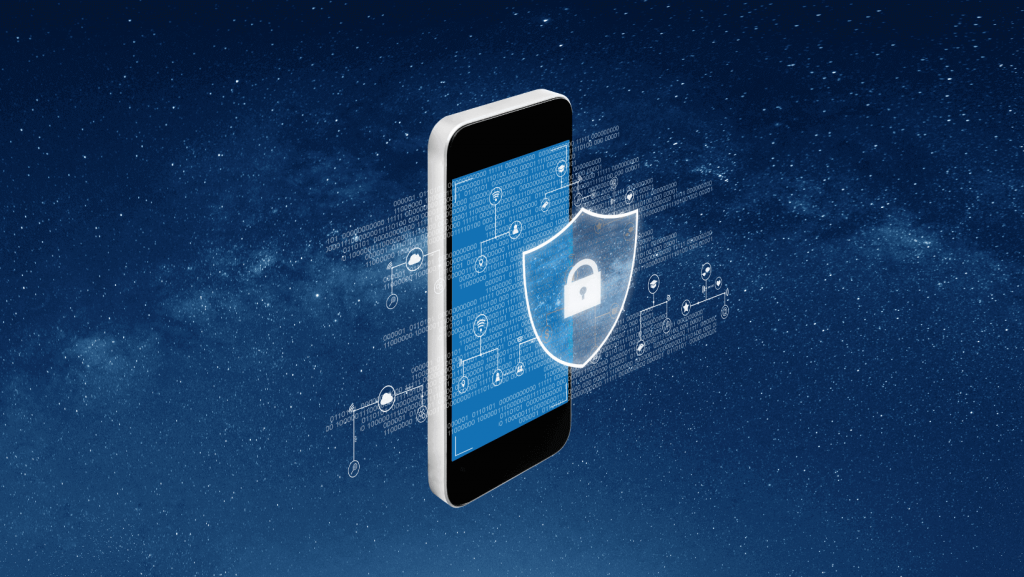Data Privacy, Cybersecurity, Mobile Technology
Ten tips to Protecting Personal Data on iPhones

Written By
Since our iPhones hold a treasure trove of personal information, keeping data safe is of utmost importance. From sensitive messages and health information, to financial data, and even user accounts and passwords there is a lot of personal information on our devices that requires continuous monitoring and protection. Here are some tips and best practices to strengthen the security of your personal information on an iPhone.
1. Set a strong passcode: Your iPhone's first line of defense is a strong passcode. Avoid easy-to-guess codes like "1234" or "0000. Instead, choose a combination of numbers, letters and symbols ( a custom alphanumeric code) to create a complex and memorable password. You can set or change the passcode in the Settings app under Face ID and Passcode (or Touch ID and Passcode for older models).
2. Take advantage of biometric authentication: Use the biometric authentication features provided by iPhone, such as Face ID or Touch ID. These technologies provide a convenient and secure way to unlock your device and authorize transactions. Enabling biometrics adds an extra layer of protection as these features are designed to resist fraud attempts.
3. Enable two-factor authentication: Two-factor authentication (2FA) provides additional security beyond password or biometrics. When 2FA is enabled, it requires another authentication method, usually a code sent to a trusted device, before granting access to an Apple ID or other sensitive accounts. To enable 2FA, go to Settings > [your name] > Password and Security > Two-Factor Authentication.
4. Update iOS regularly: Apple constantly releases iOS updates that include security improvements. Keeping your iPhone and operating system up to date ensures that you benefit from the latest fixes and improvements, protecting your device from potential vulnerabilities. Turn on automatic updates in the Settings so you don't miss important security fixes.
5. Stay Informed: While Apple continues to make the users experience easier and more seamless with new updates, make sure you stay apprised of what the new updates/features present. The latest iOS 17 update has a feature called NameDrop, designed to share a user’s contact(s) by bringing their iPhone near a recipient iPhone. This feature is on by default. Many feel this presents an undue risk of potential data loss and hence, a setting change is necessary especially if you do not plan to use this feature.
6. Check app permissions: Regularly check the permissions granted to apps. Control which apps have access to your location, camera, microphone, and other sensitive features. Limit access to only what is necessary for the application to function. You can manage application access rights through privacy settings.
7. Take advantage of data protection management: See privacy controls in the Settings app. In the Privacy & Security section, you can adjust the settings for different services, such as Location services, Tracking, Analytics & Improvements, and Apple Analytics. Adjust these settings according to your risk toleration and desired level of privacy.
8. Avoid clicking on unknown links: If you receive a text message from an unknown sender that contains a link, do not click on it. The link may be to malicious software or to a site that appears real but is actually a scam to take your personal information. Confirmation of delivery details is an example of such a message. Delete the message and Report as Junk. This will cause the conversation to go to Apple and your cell phone carrier.
9. Do not fall for the virus “warning” message: These pop-up messages are linked to scam sites. The warning often advises that the iPhone is infected with a specific number of viruses by a particular website. The warning is to cause the user to panic and to react by doing something which will then potentially cause the user a problem. It is extremely rare for an iPhone to get a virus.
10. Back up your data: If your iPhone is lost or stolen, a recent backup ensures that your data can be easily restored to the new device. Use iCloud or iTunes for regular backups and enable iCloud Backup in your settings for an automatic and seamless backup process.
By following these tips and best practices, iPhone users can increase their defenses against unauthorized access and safeguard their data from potential threats. Prioritizing security settings, regularly updating software, and being aware of managing app access rights all contribute to a more secure mobile experience. Remember that your iPhone is not just a device; it is also the safe of your personal world, and strengthening its security is an investment in your digital well-being.
